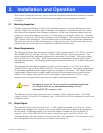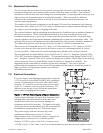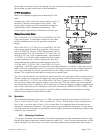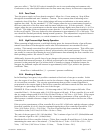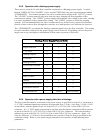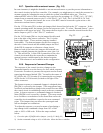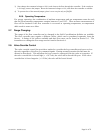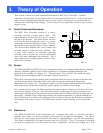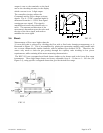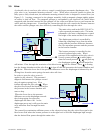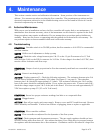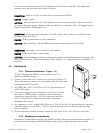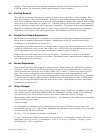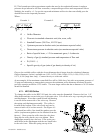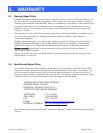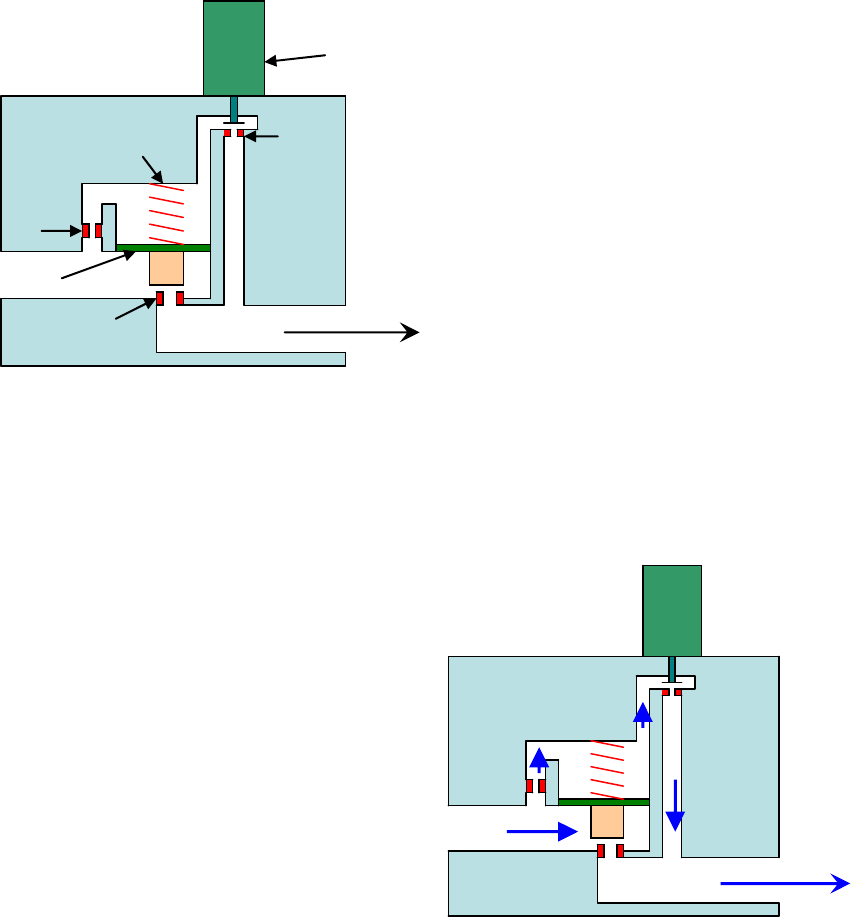
141-072011 - 201/203 Series Page 17 of 23
3.5. Valve:
A solenoid valve is used as a pilot valve to control a much larger pneumatic diaphragm valve. The
pilot valve is an “automatic metering solenoid” valve. While most solenoids operate in either the
fully open or fully closed state, the automatic metering solenoid valve is designed to control flow (see
Figure 3.5). A spring, connected to the plunger assembly, holds a magnetic plunger tightly against
an orifice to shut off flow. The magnetic plunger is surrounded by an electrical coil, which when
energized with electrical current lifts the plunger off the orifice and allows flow to pass between the
orifice and the plunger seat. Controlling the current through the coil controls the distance between
the orifice and the plunger seat, thus effectively controlling the flow through the valve.
The main valve used in the HFC-203/207 is
a pilot operated pneumatic valve. The main
pneumatic valve uses a diaphragm to control
the height of the main seat above the orifice.
The diaphragm position is controlled by
balancing competing forces from the main
spring and the pressure difference between
the valve upstream pressure and the pressure
in the bonnet chamber.
The bonnet pressure is controlled by the
solenoid operated pilot valve. When
pressure is first applied and the pilot valve is
closed, system pressure P
u
is much higher
than the bonnet pressure P
b
. P
u
will push up
the diaphragm against P
b
and the main flow
will initiate. Flow through the restriction of the bleed screw Q
b
will also initiate. Since Q
b
is flowing
into the bonnet chamber and the pilot flow Q
p
is shut off this will pressurize the bonnet chamber and
P
b
will rise. When the force due to the pressure difference across the diaphragm is balanced by the
closing force from the main spring, the main valve will close.
In order to open the valve, power is
applied to the solenoid. The generated
magnetic field attracts the plunger toward
the pole against spring force. Flow
initiates through the pilot valve Q
p
. When
the pilot flow exceeds the bleed screw flow
the pressure in the bonnet chamber will
start to drop.
When the force due to the pressure
difference across the diaphragm exceeds
the closing spring force then the
diaphragm will start to lift. As the
diaphragm moves up it will open the main
valve and allow flow through the main
orifice.
The control loop maintains sufficient power to the solenoid to keep the pilot valve flow equal to the
bleed screw flow when the bonnet pressure is at the right level to hold the diaphragm high enough
that the desired flow passes through the main valve.
Solenoid
Pilot
Bleed
Screw
Main
Orifice
Main
Spring
Diaphragm
Pilot
Flow Q
p
P
d
Bleed
Flow Q
b
P
u
P
b
Main Flow Q
m
(F



